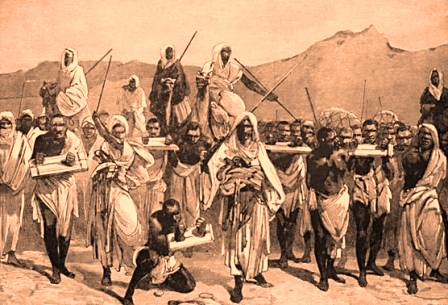WHI-Chap19-slave trade
Slave Trade
As a result of the drastic increase of trans-Saharan trade, demand for slaves increased. Previously, slaves came from Europe but as trade became more inclusive towards India, Persia, and southwest Asia, the European supply of slaves was depleted, and merchants began to trade in sub-Saharan Africa not only for gold and ivory, but also for African slaves. African states began to conduct slave raids, where one state would take over a neighboring city or village and sell its population into slavery. This put an end to many kin-based societies, which were traditionally weaker than centralized societies. Slaves were a measure of power in African societies because of the lack of private property. All property belonged to the village, so wealth was measured by agricultural output rather than amount of land. Slaves increased surplus by decreasing the amount of individual labor required, therefore increasing wealth and social standing. The Zanj revolt (“zanj” meaning black slaves of the Swahili coast) was a series of uprisings in southern Mesopotamia which, for the most part, were inconsequential and easily dealt with. However, in 869, Ali bin Muhammad, a rebel slave, assembled a slave army of 15,000 that captured Basra and established a rebel state. Abbasid rulers addressed the problem in 879 and had ended it by 883. This was evidence that African slavery held a major role in Muslim society. The highly active network of slave trade (more than 10 million African slaves in total) provided a foundation for later trade systems in the Atlantic. (T&E pp.499-500)


Page created by: Pranav Bhamidipati
Return to WHI-Second Semester